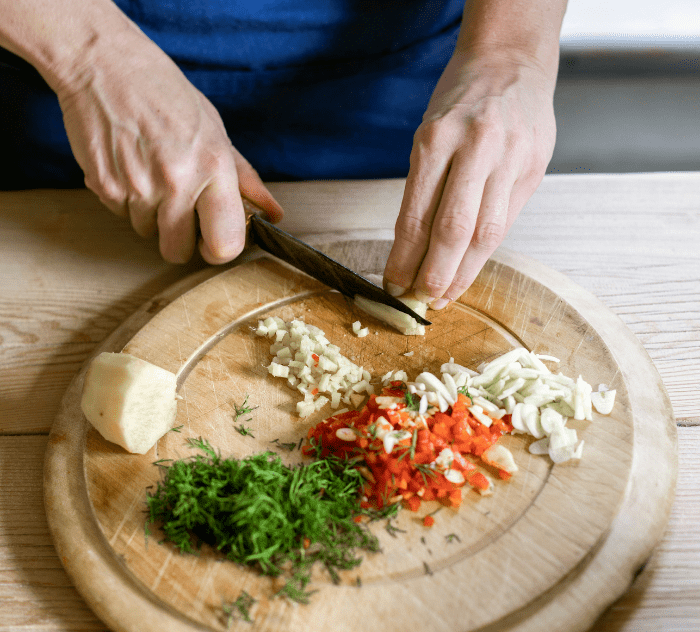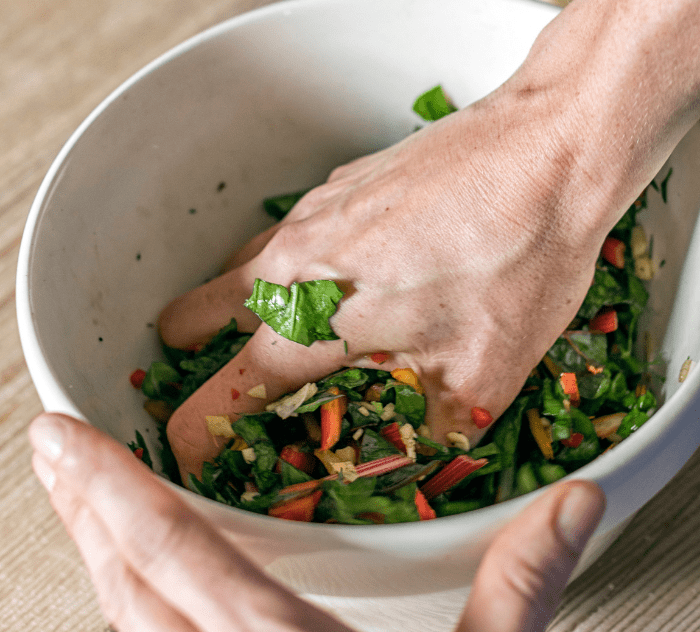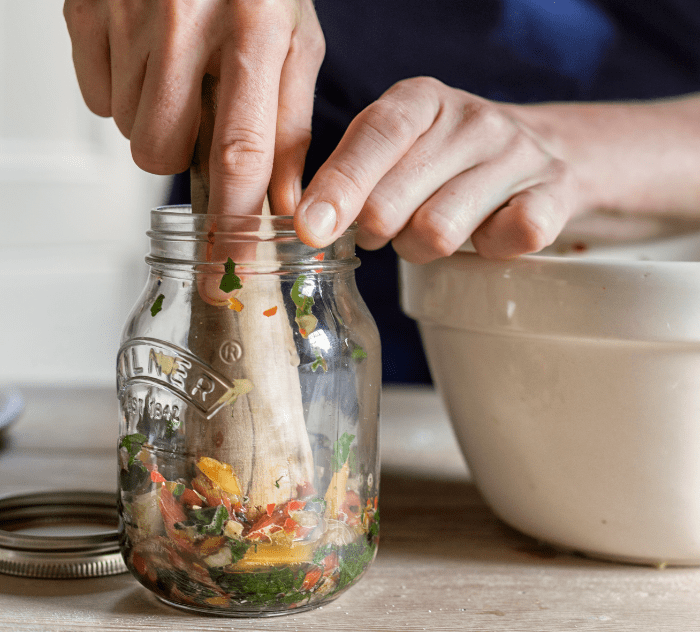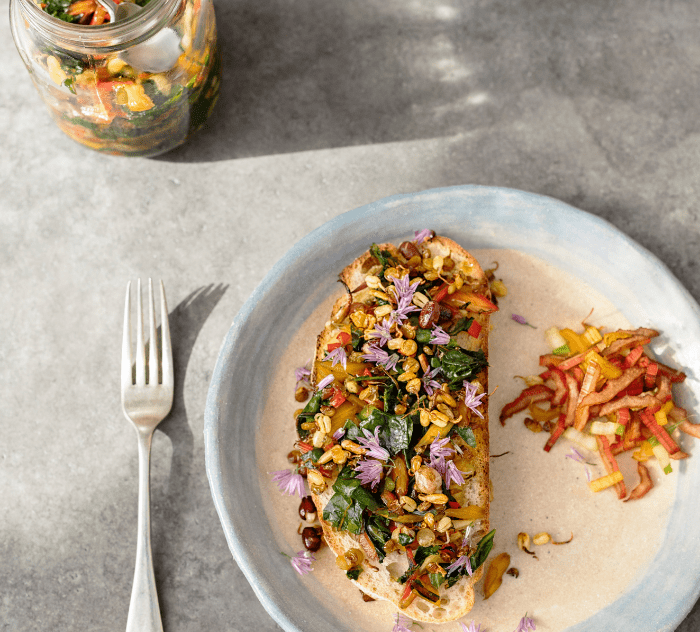Makes – 1 litre (1¾-pint) jar
Ingredients:
- large bunch of rainbow chard (around 500g/1lb) leaves roughly shredded and stalks chopped into large chunks
- bunch of dill, finely chopped
- 2 fat garlic cloves, sliced 5cm (2in)
- knob of ginger, peeled and finely chopped
- 1 or 2 red bird’s eye chillies, finely chopped
- fine sea salt
Equipment – 1-litre (1¾-pint) preserving or fermentation jar, sterilized pestle or rolling pin (optional)
Rainbow Chard Kimchi Method
- Prepare enough chard to fill the preserving jar almost to the top, tightly packed in. Test the fit and weigh the chard. Prepare the dill, garlic, ginger, and chilli but keep separate (fig. a); weigh these as well, then set aside. Measure out 2–3 per cent of the total weight in salt.

fig. a - Place the chard in a large bowl and sprinkle over the salt. Massage the salt into the chard, until it begins to release beads of water and starts to soften (fig. b). Leave for a couple of hours to let osmosis take effect.

fig. b - Place the salted chard and any juices into the jar, scattering over the herbs and spices with each handful. Pack in the vegetables tightly, pressing them down as you go and eliminating air pockets between layers. Use a pestle or the end of a rolling pin to tamp down the ingredients (fig. c).

fig. c - Top up the jar with water, if needed, so that the vegetables are submerged. Cut a disc of baking parchment large enough to cover the contents of the jar, with some excess. Place the disc over the vegetables, pressing it down and into the edges to ensure the surface is completely covered.
- Seal the jar and date and label the contents. Leave to ferment at room temperature, out of direct sunlight, for 1–2 weeks. Taste regularly after 1 week, until the preferred degree of sourness is reached, then transfer to the fridge, where it will keep for several months.
Expert Tips:
- Spread the salt over the greatest surface area to increase osmosis: massage thoroughly and get it right into any crevices.
- The parchment keeps ingredients submerged to maintain an anaerobic environment. A plastic bag filled with air is an effective alternative, or you can buy jars with built-in airlocks.
- Look out for small bubbles of carbon dioxide, a sign that fermentation is in full swing. If the process is slow to get going, try moving the jar to a warmer spot.
Recipes extracted from The Artisan Kitchen by James Strawbridge, Published by DK Books, RRP $49.99 AUD/ $55 NZD





